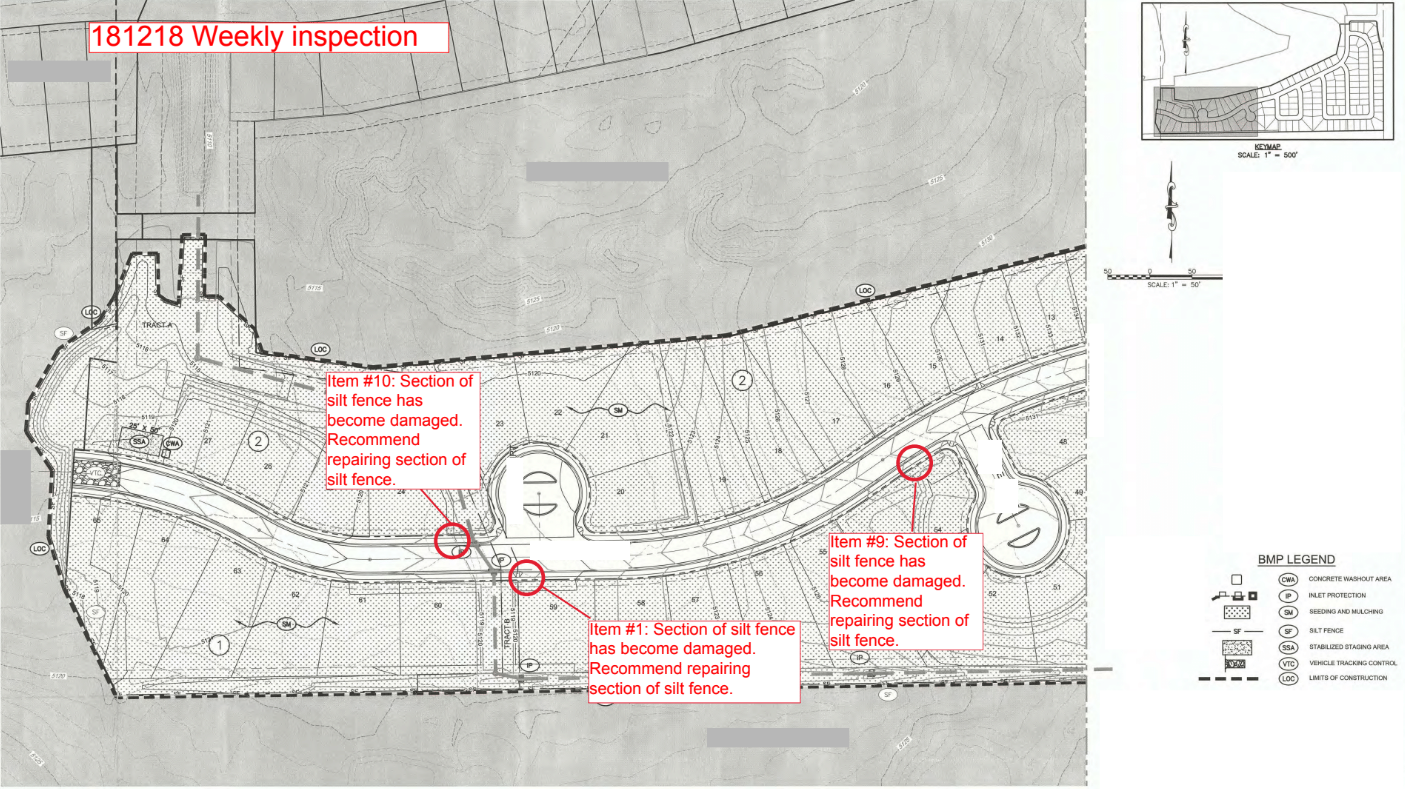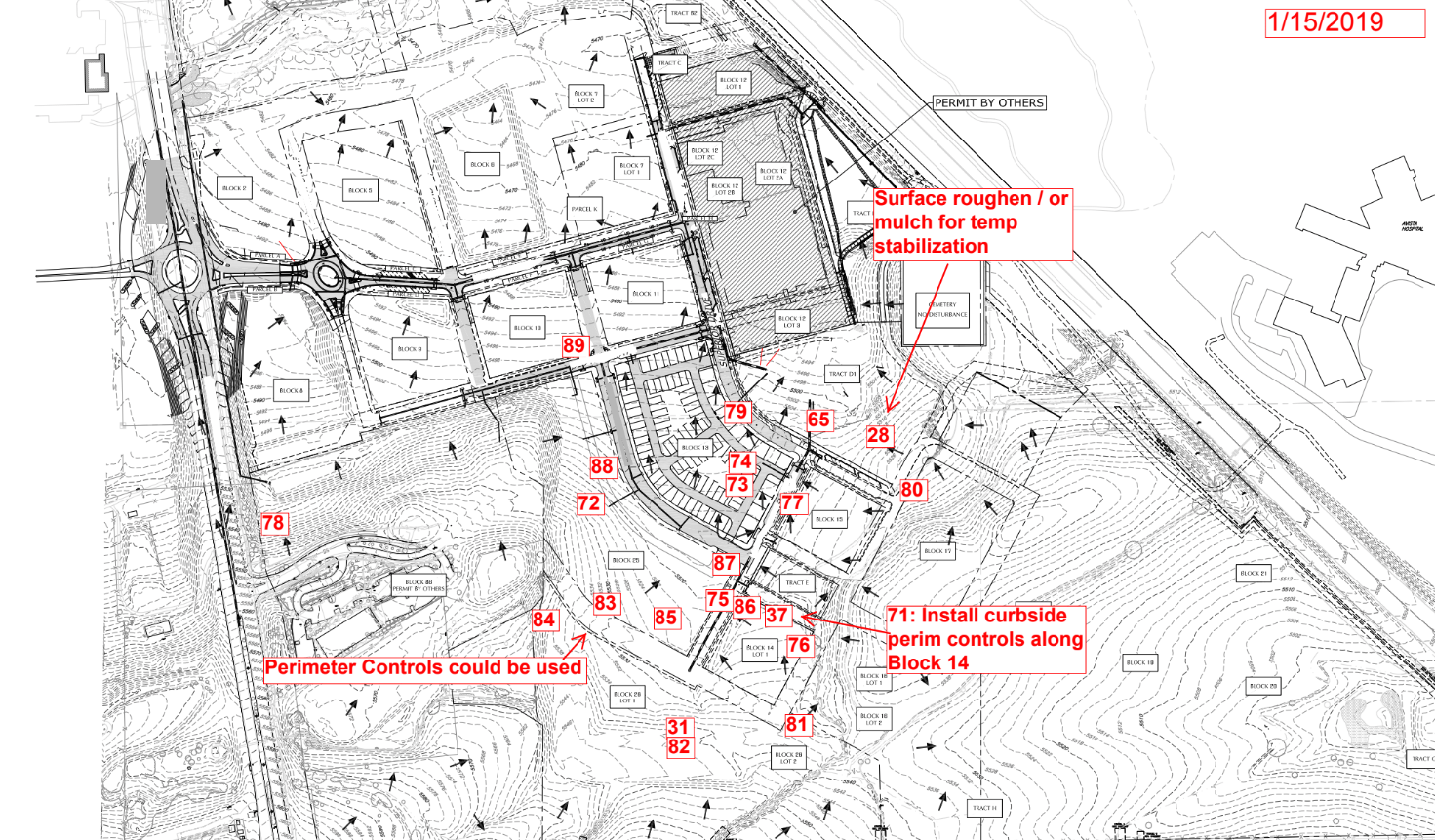Actionable Inspection Reports
In the simplest of terms, the purpose of a stormwater inspection is twofold.
Stormwater Inspections – A Dual Purpose
First is to create an accurate snapshot of site conditions. It is documenting the status of all the Best Management Practices (BMPs) called for in the Stormwater Management Plan (SWMP), whether they are erosion control, sediment control, pollution prevention, structural or non-structural, temporary or permanent. It involves looking for offsite impacts, and it is evaluating the functionality of the installed BMPs and the adequacy of the overall design.
The second major function is to make any findings or shortcomings actionable. If your site is audited and you proudly share a stack of inspection reports that have not been acted on or implemented, you’ve missed the point (and the regulator will help clarify this for you!) Many reports will call out items to be maintained, repaired, replaced, or installed, so an important function of any stormwater inspection report is the list of action items.
As an inspection company, we don’t like being the bearers of bad news. It is no fun to hand off an inspection report to the site super with a long list of action items. But this is our role, to observe with an experienced eye, and recommend actions that will restore compliance levels. We consider ourselves your partners in compliance, so we take every opportunity to be proactive, and to catch maintenance items before they become bigger problems. And we pride ourselves on educating the players at each project to alert them to the best options for resolving problems.
Clarity and Detail Provide Actionable Items
One way we know we can help the owner/operator is with clarity and a level of detail that allow them to quickly decide on a course of action and sufficient detail to allow those actions to proceed without confusion and without needless hand holding of contractors who will complete the action items.
Below is an example of a helpful supplement to a report that is designed to make delegating the repair items easy and trackable. The map is dated, the items are numbered to match the inspection report, and a short description calls out the action needed, and being located on site map helps all parties be completely clear about what needs to happen and where. Note that not every inspection report needs this level of detail, but with larger sites and more complex projects, we have found this to be a significant time saver for all parties.

In this second example, we have a larger site, with more complexity than the previous example. On projects like this, working without a map would potentially lead to missed items, miscommunication about which items are approved, and a high likelihood that the site super would have to take an extended tour of the site to lay out items for the BMP contractor. We believe the amount of time saved using maps like this to supplement inspection reports will often offset the actual cost of the inspection. Small comfort when you are facing a large repair bill, but at least we can minimize the confusion and headaches of managing stormwater at this project.

Summit is proud to partner with you on your project, and these maps are one example of how we can add value to the inspection process and keep you on top of all moving parts needed to maintain compliance. If you would like to experience the time savings of this type of supplemental report, please give us a call to discuss your needs.
